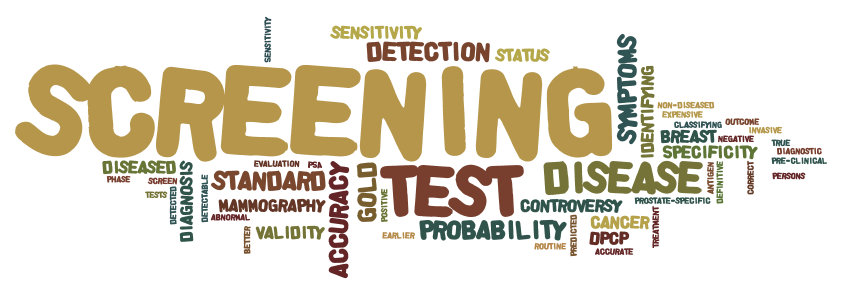
Introduction
Without screening, diagnosis of disease only occurs after symptoms develop. However, disease frequently begins long before symptoms occur, and even in the absence of symptoms there may be a point at which the disease could be detected by a screening test. The time interval between possible detection by screening and later detection after symptoms is the "detectable pre-clinical phase" or DPCP. We hope that detection of disease in the DPCP will lead to earlier treatment and that this, in turn, will lead to a better outcome. However, this is not always the case. There has been much controversy regarding the age at which routine mammography screening should begin in order to screen for breast cancer. More recently, there has been controversy about whether PSA (prostate-specific antigen) screening should be used at all in men.
Learning Objectives
After completing this module, the student will be able to:
- Identify which types of diseases are appropriate for screening
- List the characteristics of a good screening test
- Define what is meant by the reliability of a screening test, and list the factors that influence reliability
- Define "detectable pre-clinical phase" of disease
- Define, calculate, and interpret the sensitivity, specificity, positive predictive value and negative predictive value of a screening test
- Explain how increasing or decreasing the cut-off value used to identify an abnormal test result influences sensitivity and specificity of the screening test
- Explain how predictive value is influenced by prevalence of disease
- Explain what is meant by "lead time bias"
- Explain what is meant by "length time bias"
- Discuss the potential harms of screening



